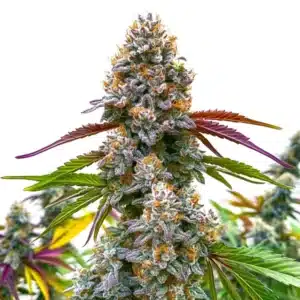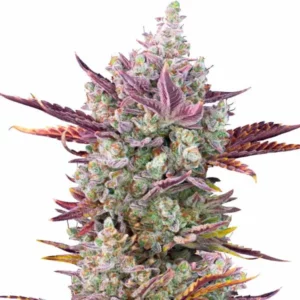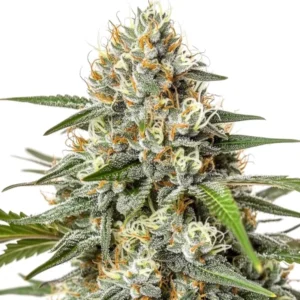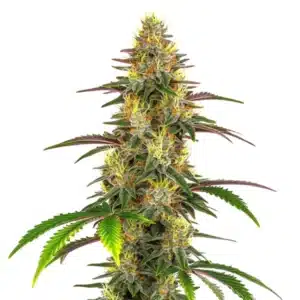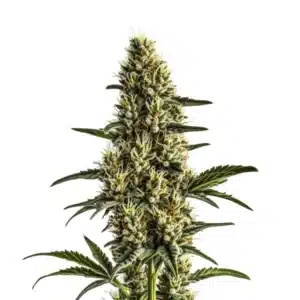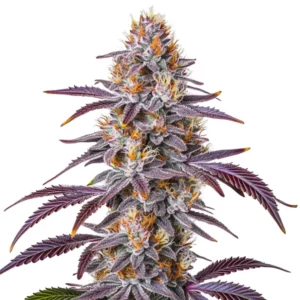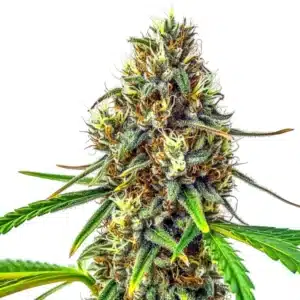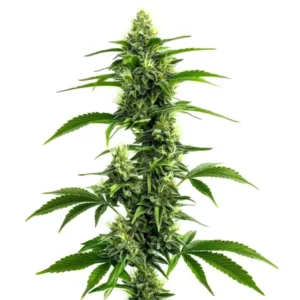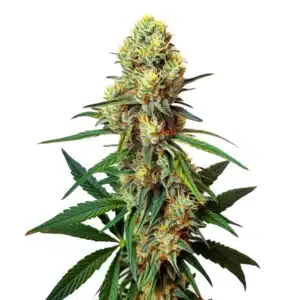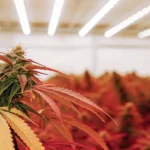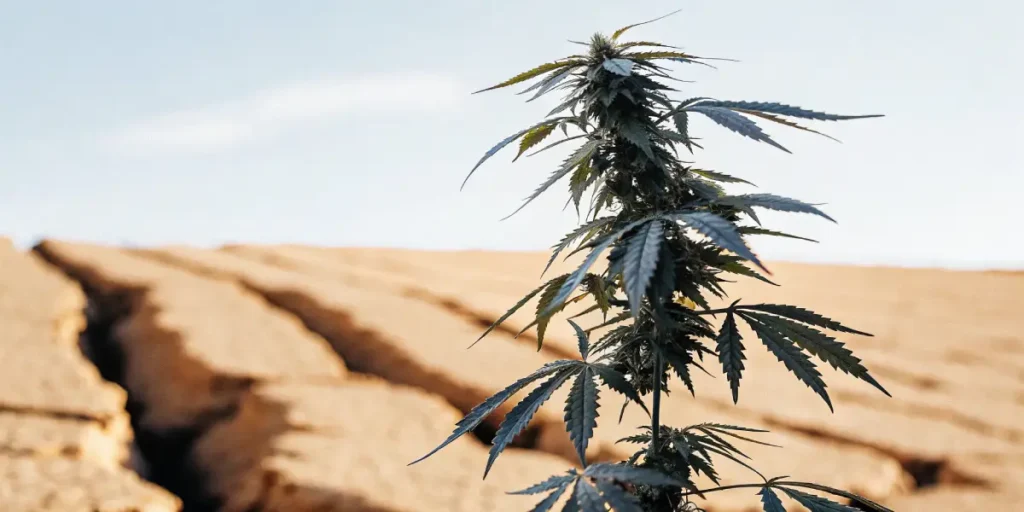
How Drought Affects Cannabinoid Production
Drought can be a real game-changer when it comes to growing cannabis. It impacts the plants in ways you might not expect. When water is scarce, cannabis plants have to adapt to survive. This adaptation can significantly affect how they produce cannabinoids.
Cannabinoids are the compounds in cannabis that provide its effects. THC and CBD are the most well-known. When a cannabis plant experiences drought, its stress levels increase. This stress can lead to changes in how cannabinoids are produced.
Recommended Strains
Blue Dream
|
|
THC | 17% - 24% (Medium) |
|
|
Type | Feminized |
|
|
Yield | High |
|
|
Phenotype | 50% Indica / 50% Sativa |
Critical Daddy Purple
|
|
THC | 19% (Medium) |
|
|
Type | Feminized |
|
|
Yield | High |
|
|
Phenotype | 50% Indica / 50% Sativa |
For those growing cannabis, knowing how drought affects cannabinoid production is crucial. It can mean the difference between a successful harvest and a disappointing one. Let’s dive into how water scarcity influences cannabis cannabinoids and what you can do about it.
Impact of Drought on Cannabis Cannabinoid Levels
Water is essential for all living things, and cannabis plants are no exception. When drought hits, the plant’s growth slows down. This slowdown affects the plant’s ability to produce cannabinoids. The impact of drought on cannabis cannabinoid levels can be significant.
As the plant struggles to find water, it focuses on survival rather than growth. This shift in focus can lead to lower cannabinoid levels. However, there are situations where drought stress effects on marijuana cannabinoid synthesis can actually increase certain cannabinoids.
The impact of drought on cannabis cannabinoid levels extends beyond just the amount produced; it also influences the plant’s chemical balance. As plants prioritize survival, they may allocate resources differently, leading to variations in the types of cannabinoids synthesized.
Knowing the impact of drought on cannabis cannabinoid levels is essential for growers aiming to maximize yield and quality. By recognizing how plants react to stress, growers can implement strategies to mitigate negative effects while enhancing positive outcomes.
Drought Stress Effects on Marijuana Cannabinoid Synthesis
Stress isn’t always a bad thing for cannabis plants. When under stress, they can produce more cannabinoids as a defense mechanism. This is why some growers use stress techniques to boost cannabinoid production.
However, too much stress can be harmful. It can lead to a reduction in overall plant health and yield. Finding the right balance is key. Some cannabis strains are more resilient to drought and can handle stress better.
The drought stress effects on marijuana cannabinoid synthesis can be complex. While moderate stress can stimulate the plant’s natural defense mechanisms, excessive stress may hinder its growth and reduce its overall vitality.
Growers must carefully monitor the drought stress effects on marijuana cannabinoid synthesis to ensure they do not cross the threshold where stress becomes detrimental. This requires a nuanced knowing of plant biology and environmental conditions.
How Water Scarcity Influences Cannabis Cannabinoids
Water scarcity doesn’t just affect the quantity of cannabinoids produced. It can also alter the ratio of different cannabinoids. Some growers intentionally use water scarcity to influence this balance.
When a plant is deprived of water, it produces more resin. This resin contains cannabinoids. As a result, drought-induced changes in hemp cannabinoid profile can lead to higher concentrations of specific cannabinoids.
How water scarcity influences cannabis cannabinoids is a topic of great interest among researchers and growers alike. By knowing these influences, it is possible to tailor cultivation practices to achieve specific cannabinoid profiles.
In particular, how water scarcity influences cannabis cannabinoids can provide insights into optimizing strain selection and cultivation methods, allowing growers to better meet market demands for specific cannabinoid content.
Promos & Deals
Managing Drought Conditions for Optimal Cannabinoid Production
Managing drought conditions effectively can lead to optimal cannabinoid production. The key is to provide enough stress to boost cannabinoid levels without harming the plant.
One technique is to gradually reduce water availability. This method allows plants to adapt slowly and minimize shock. It’s a careful balance that requires attention and experience.
To manage drought conditions for optimal cannabinoid production, growers should consider not only water scarcity but also other environmental factors that impact plant health. Temperature, light, and nutrient availability all play crucial roles.
By integrating a holistic approach, growers can enhance their knowing of how drought affects cannabinoid production and develop strategies to maintain plant health and maximize cannabinoid yield.
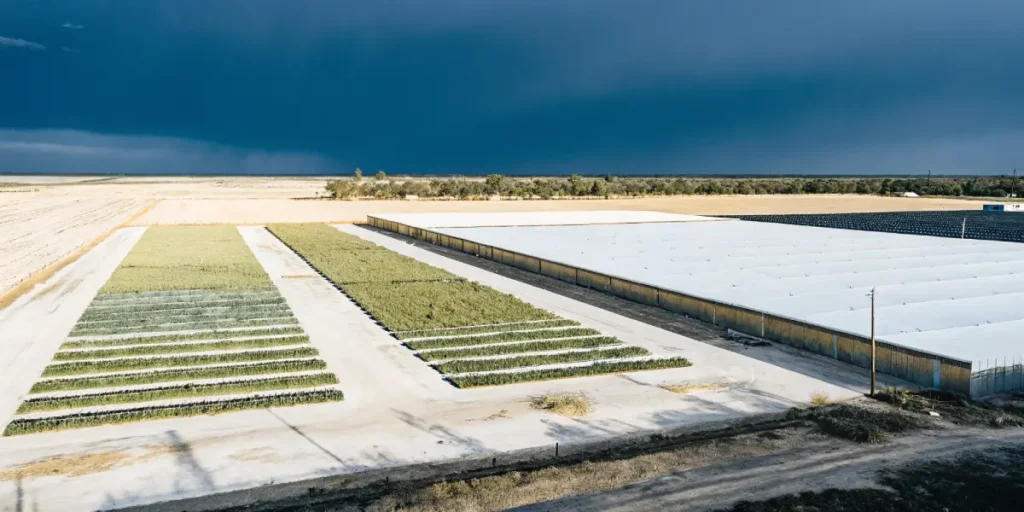
Cannabis Plant Response to Drought in Cannabinoid Production
Cannabis plants have a remarkable ability to adapt. When faced with drought, they undergo changes at a cellular level. These changes can enhance cannabinoid production if managed correctly.
+For instance, the Blue Dream strain is known for its adaptability. It can adjust to varying water conditions, making it a favorite among growers in dry climates.
The cannabis plant response to drought in cannabinoid production involves intricate biochemical pathways that regulate stress responses. These pathways may lead to enhanced production of secondary metabolites, including cannabinoids.
Knowing the cannabis plant response to drought in cannabinoid production requires careful study and experimentation, as different strains and growing conditions can lead to diverse outcomes in cannabinoid profiles.
- Monitor soil moisture levels regularly.
- Use mulch to retain soil moisture.
- Choose drought-resistant strains like Critical Daddy Purple.
- Water plants deeply but less frequently to encourage root growth.
- Consider using drip irrigation for efficient water use.
FAQs Section
Why does drought affect cannabinoid production?
Drought affects cannabinoid production because it stresses the plant. Stress can lead to changes in how cannabinoids are synthesized. In some cases, stress can increase cannabinoid levels, while in others, it may decrease them.
The plant focuses on survival rather than growth during drought. This shift in focus can alter the production of cannabinoids. Knowing how drought affects cannabinoid production helps growers manage plant stress effectively.
Another reason why drought affects cannabinoid production is the plant’s adaptive mechanisms, which kick in during periods of water scarcity. These mechanisms prioritize essential survival processes, sometimes at the expense of cannabinoid synthesis.
Recognizing why drought affects cannabinoid production allows growers to fine-tune their cultivation practices, ensuring that they can harness the plant’s natural responses for improved quality and yield.
Can drought increase THC levels?
Drought can increase THC levels in certain strains. When plants experience water scarcity, they produce more resin. This resin contains higher concentrations of cannabinoids, including THC.
However, the increase in THC levels depends on the strain and how the drought stress is managed. Controlled drought conditions can lead to higher THC without compromising plant health.
The ability of drought to increase THC levels is particularly strain-dependent, as some varieties are genetically predisposed to respond favorably to stress. This knowledge empowers growers to select strains that can thrive under water-limited conditions.
By experimenting with controlled drought conditions, growers can strategically influence the cannabinoid profile of their crops, potentially leading to higher THC levels and more potent products.
What are the best strains for drought conditions?
Some strains are better suited for drought conditions. Critical Daddy Purple, Gelato, and Blue Dream are popular choices. These strains are known for their resilience and ability to thrive with less water.
Choosing the right strain is crucial for growers in dry climates. These strains can handle stress well and still produce high-quality cannabinoids.
Other strains that have shown promise in drought conditions include OG Kush and Northern Lights. These strains have demonstrated the ability to maintain robust growth and produce desirable cannabinoid profiles even in challenging environments.
Knowing the genetic traits that make certain strains more drought-tolerant can guide breeders and growers in developing new varieties that better withstand water scarcity while maintaining high cannabinoid production.
How can I manage drought stress in cannabis plants?
Managing drought stress requires a balance of stress and care. Gradually reducing water availability allows plants to adapt. Monitoring soil moisture and using mulch can help retain moisture.
Deep watering encourages root growth, making plants more resilient. Drip irrigation is also an effective method for managing water use efficiently.
To effectively manage drought stress in cannabis plants, growers should also consider implementing shade nets to reduce evaporation and temperature extremes. This can create a more favorable microclimate for plant growth.
Advanced techniques such as hydrogel application and soil conditioning agents can further enhance water retention, helping to buffer the impact of drought stress on plant health and cannabinoid production.
Does drought affect CBD levels in cannabis?
Drought can affect CBD levels, but the impact varies by strain. Some strains may see an increase in CBD, while others might not. The plant’s response to drought stress influences the cannabinoid profile.
Growers looking to enhance CBD levels should experiment with controlled drought conditions. Observing plant response helps fine-tune the growing process for desired results.
While drought can affect CBD levels, it is not always a straightforward increase or decrease. The specific environmental conditions and genetic predispositions of the strain play crucial roles in determining the outcome.
By closely monitoring how drought affects cannabinoid production, particularly CBD, growers can optimize their cultivation practices to produce plants that meet specific therapeutic or commercial goals.



